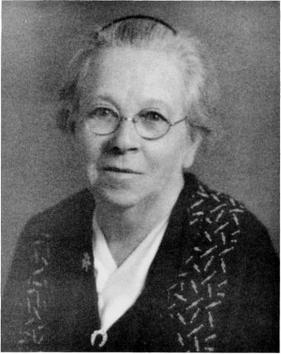Ida Shepard Oldroyd facts for kids
Quick facts for kids
Ida Shepard Oldroyd
|
|
|---|---|
 |
|
| Born |
Ida Mary Shepard
November 25, 1856 |
| Died | July 9, 1940 (aged 83) |
| Nationality | American |
| Education | University of Michigan |
| Known for |
|
| Spouse(s) | Tom Shaw Oldroyd |
| Scientific career | |
| Fields | Malacology, Conchology |
| Institutions | Stanford University |
Ida Shepard Oldroyd (1856–1940) was an American expert in conchology, which is the study of mollusk shells. She worked as a Curator of Geology at Stanford University for over 20 years. During her time there, she helped build what was once the second largest collection of mollusk shells in the world.
Ida and her husband, Tom Shaw Oldroyd, created one of the biggest private shell collections in California. Ida was known as an important early explorer in the field of conchology in the western United States. She was also a founding member of the American Malacological Union, an organization for shell scientists. She served as its vice-president in 1934 and later as honorary president until her death.
Contents
Early Life and Shell Collecting
Ida Mary Shepard was born on November 25, 1856, in Goshen, Indiana. She went to high school in Saline, Michigan. Later, she studied at the University of Michigan from 1883 to 1885. She earned a teaching certificate there.
In 1888, Ida's family moved to Long Beach, California. This is where she first started collecting shells. In September 1895, she married Tom Shaw Oldroyd. He was also a passionate shell collector. Together, they collected many shells in southern California. They even found rare specimens brought in by local fishermen's nets.
A Career in Shell Science
In 1914, the California Academy of Sciences asked Ida to help. She classified and packed part of a large shell collection belonging to Henry Hemphill. This collection was being moved to the Academy after Hemphill passed away.
In 1916, Stanford University hired Ida. Stanford had bought the Hemphill collection and needed her to organize it. A year later, Stanford bought the Oldroyds' own private shell collection. They then hired both Ida and Tom as curators in the Department of Geology. They worked there for the rest of their lives.
By the mid-1920s, the Stanford shell collection was the second largest in the world. Ida and Tom continued to collect shells from California and Washington state. In 1929–1930, they traveled around the world. They collected more shells and helped Stanford get even larger collections.
In 1922, the American Museum of Natural History in New York hired Ida as a consultant. She spent several months there studying and organizing their shell collection. Ida wrote many scientific papers. She is especially known for her major books: Marine Shells of Puget Sound and Vicinity (1924) and The Marine Shells of the West Coast of North America. This last work was a four-volume series published between 1924 and 1927.
Ida was a founding member of the American Malacological Union. She was the vice-president in 1934. From 1935 until 1940, she was the honorary president.
Later Life and Lasting Impact
Ida Oldroyd passed away on July 9, 1940, in Palo Alto, California. She was 83 years old. At the time of her death, the Stanford shell collection was the largest at any American university.
Ida Oldroyd discovered and described over 20 new species of mollusks. She also described a new species of coral. Many mollusk species are named in her honor. These include Tellina idae, Mitra idae, Odostomia (Chrysallida) oldroydi, Alvania oldroydae, Bittium oldroydae, and Melanella oldroydae. The coral Dendrophyllia oldroydae is also named after her.
About Her Husband
Tom Shaw Oldroyd was born in Huddersfield, England, on June 13, 1853. His family moved to Flushing, Queens, New York, in 1855. In 1880, he moved to California and settled in Long Beach. This is where he started collecting shells. Tom was especially interested in fossil shells from the Pleistocene era. He passed away on November 3, 1932, at the age of 80. About 10 species are named in his memory.

